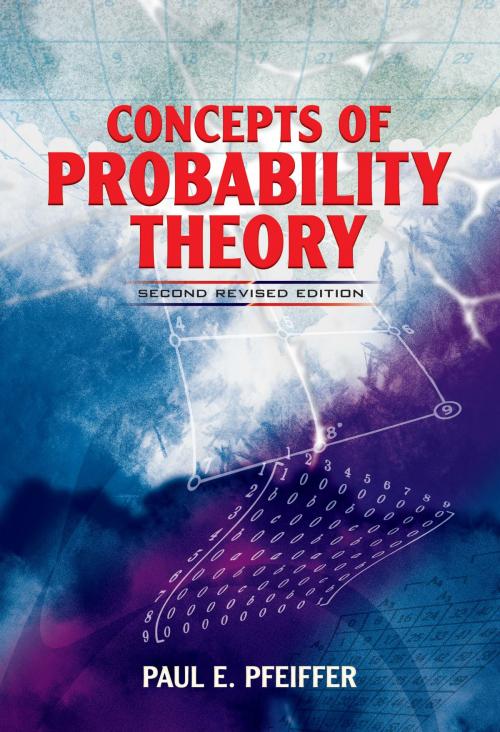Concepts of Probability Theory
Second Revised Edition
Nonfiction, Science & Nature, Mathematics, Statistics| Author: | Paul E. Pfeiffer | ISBN: | 9780486165660 |
| Publisher: | Dover Publications | Publication: | May 13, 2013 |
| Imprint: | Dover Publications | Language: | English |
| Author: | Paul E. Pfeiffer |
| ISBN: | 9780486165660 |
| Publisher: | Dover Publications |
| Publication: | May 13, 2013 |
| Imprint: | Dover Publications |
| Language: | English |
This approach to the basics of probability theory employs the simple conceptual framework of the Kolmogorov model, a method that comprises both the literature of applications and the literature on pure mathematics. The author also presents a substantial introduction to the idea of a random process. Intended for college juniors and seniors majoring in science, engineering, or mathematics, the book assumes a familiarity with basic calculus.
After a brief historical introduction, the text examines a mathematical model for probability, random variables and probability distributions, sums and integrals, mathematical expectation, sequence and sums of random variables, and random processes. Problems with answers conclude each chapter, and six appendixes offer supplementary material. This text provides an excellent background for further study of statistical decision theory, reliability theory, dynamic programming, statistical game theory, coding and information theory, and classical sampling statistics.
This approach to the basics of probability theory employs the simple conceptual framework of the Kolmogorov model, a method that comprises both the literature of applications and the literature on pure mathematics. The author also presents a substantial introduction to the idea of a random process. Intended for college juniors and seniors majoring in science, engineering, or mathematics, the book assumes a familiarity with basic calculus.
After a brief historical introduction, the text examines a mathematical model for probability, random variables and probability distributions, sums and integrals, mathematical expectation, sequence and sums of random variables, and random processes. Problems with answers conclude each chapter, and six appendixes offer supplementary material. This text provides an excellent background for further study of statistical decision theory, reliability theory, dynamic programming, statistical game theory, coding and information theory, and classical sampling statistics.















